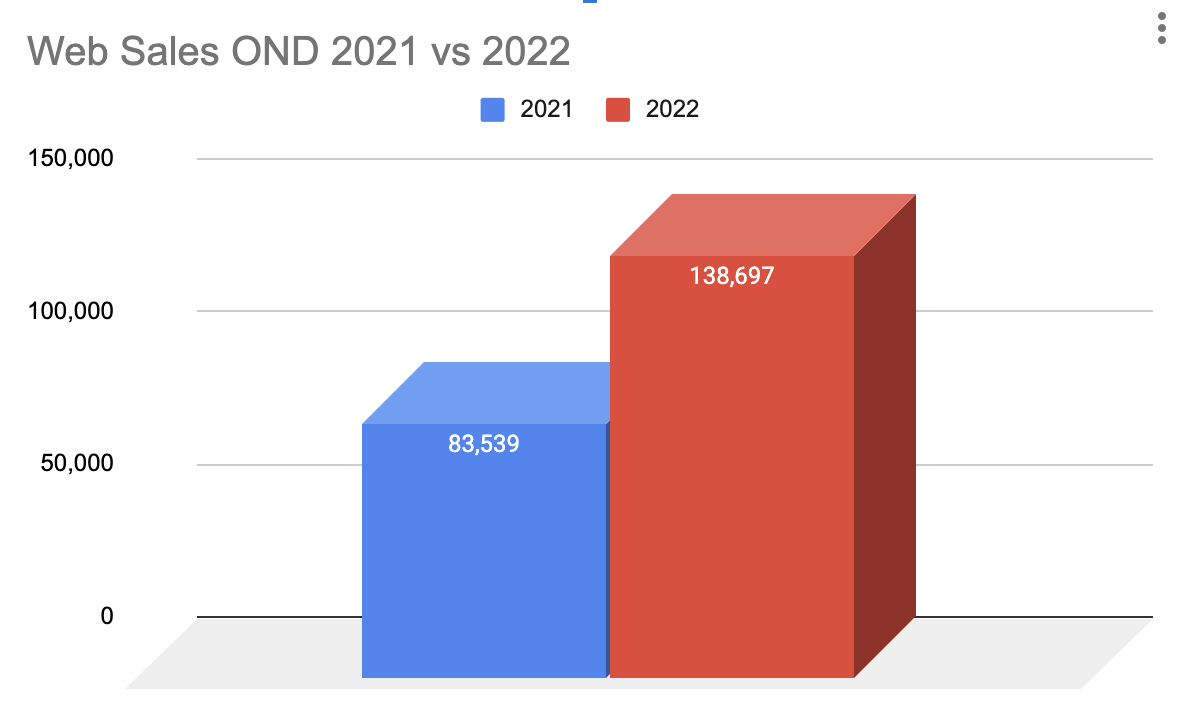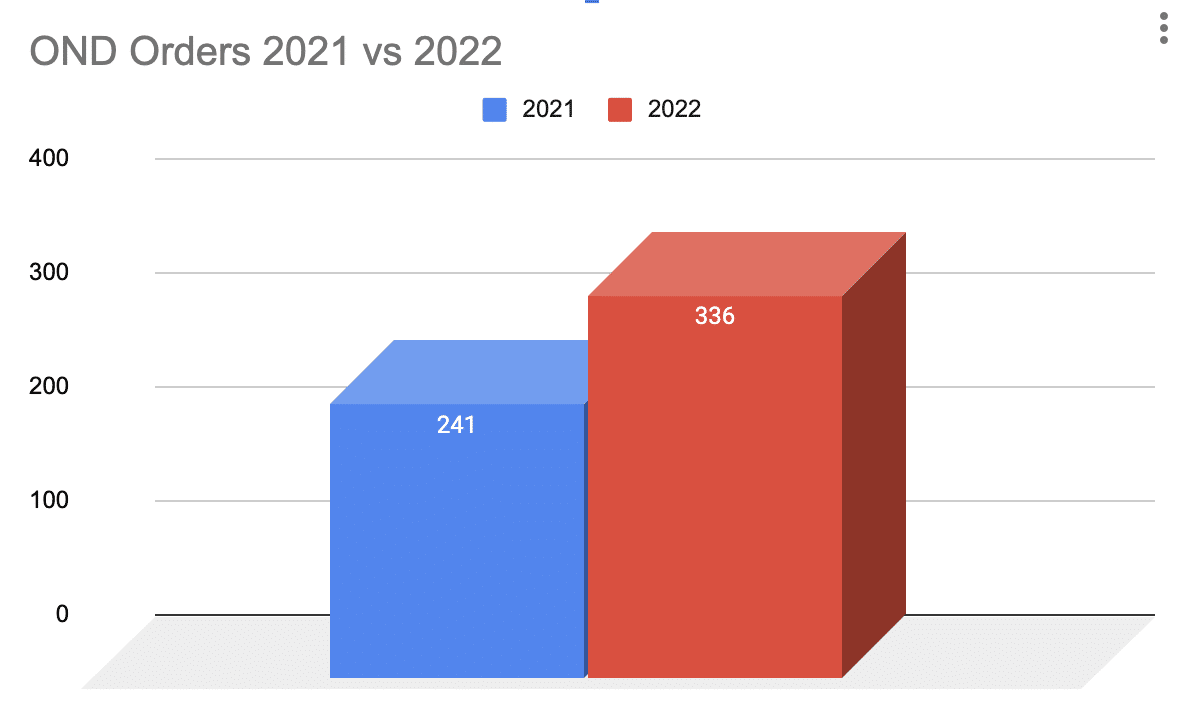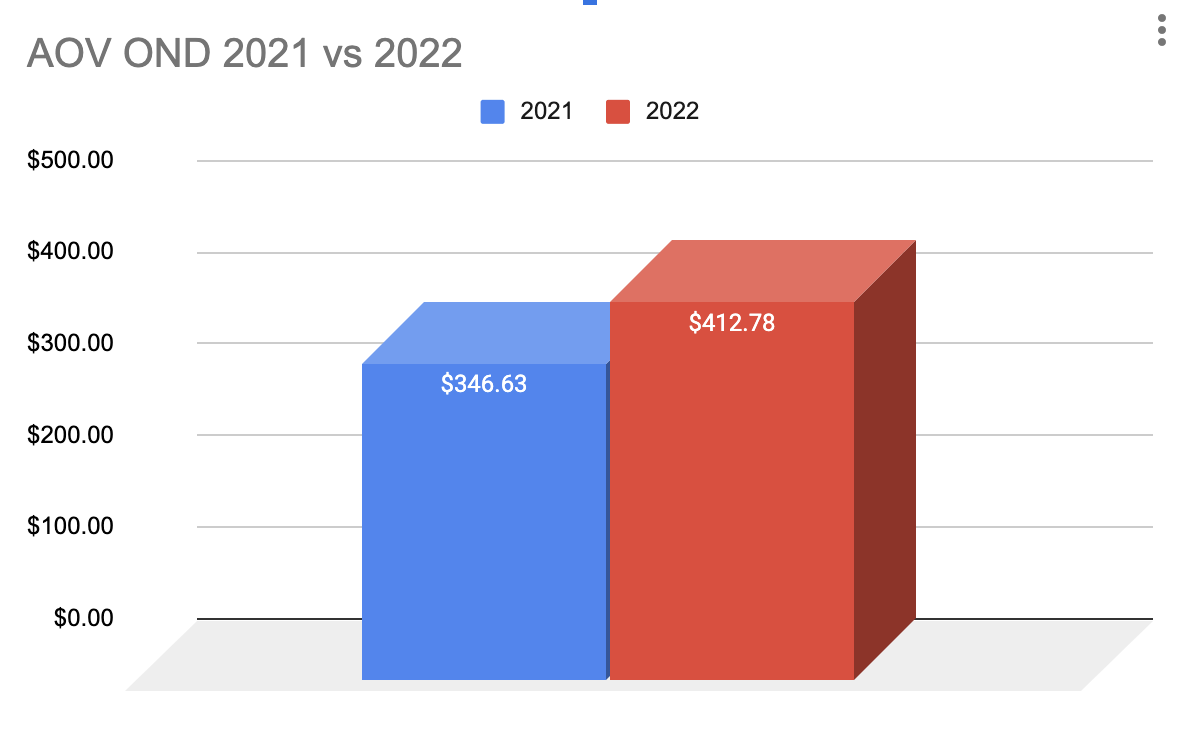About the Winery
- 25+ Years Old
- 20,000 Case Production
- Consistently Gets High Scores
- Well known to Washington wine lovers
Discovery
In August 2022 we were hired by a Washington state winery to help increase DTC sales. This winery had launched a website the year prior (which we had, actually, lost the bid on) and the new site – while beautiful – had made little impact on wine sales. In fact, sales had gone down YOY. With tasting room traffic dwindling, too, the winery really felt they needed a boost. Enter Team Lunabean.
After meeting with the team, establishing protocols, and getting everyone set up on a task manager (accountability is key to marketing success), we performed our 18-step digital marketing audit. This is system we’ve built to efficiently (and effectively) analyze the website, emails, social media, and any other digital tools they have working for them.
It didn’t take long to identify a few problems that were definitely slowing sales.
- The brand new website’s Commerce 7 Shopping Cart wasn’t working on Safari (nor any iOS device that uses Safari). Note, this was designer error, not Commerce 7 error. But it was an error that had gone missed by everyone for nearly a year. Ouch.
- The new website didn’t have Google Analytics installed, which doesn’t necessarily have a direct impact on sales, but definitely affects a business’s ability to track what’s going on with the website.
- Individual wines were not being found by Google.
- SEO, in general, was lacking.
- The website, itself, had a few friction spots, causing disruption in user flow.
- There was no chat/sms option for quick and easy communication with club members and buyers.
- Emails were not being sent strategically, nor consistently.
- Emails were too long, and did not look professional (not cool when your average bottle price is $60+)
- There was no coordination between channels (i.e. social media posts didn’t match emails, website would make not reference to emails, etc.).
- Their online advertising had no strategy behind it.
The Process
Our team was able to dig into the website and fix issues 1,2,3,4,5 and 6 ourselves. Immediately we saw sales pick up. Fixing the Safari issue was a game changer, as was having an SMS option for club members (it really makes them feel like they have their own wine concierge). Getting Google Analytics installed immediately helped us track, confirm, and fix those friction spots. Oh, and we got to use what we learned to improve SEO AND help Google find those individual wines. Badda bing!
Issue 7 spoke to another problem, and that’s that the winery had no specific marketing strategy. So, this was our next meeting. What wines did they want to sell, and to whom did they want to sell them (club, non-club, new buyers, etc)? What was going on in their tasting room that might entice people to come out? What exclusive perks could we use to entice club members (library wines, exclusive wines, etc)? What perks were we using to get people who fit the winery’s customer profile to sign up for the mailing list?
We started simple. We created a shared calendar of wines we wanted to promote each month and to whom we wanted to promote them. The calendar helped keep the team aligned and focused, as the selected wine would go out in an email, be highlighted on social media, be featured on the website, have ads surrounding it, and be talked about in the tasting room. Hit the consumer with consistent marketing, and the consumer is more likely find a time to buy (think about how many times you’ve almost bought something in an email, got distracted, then didn’t buy it – we try to prevent that from happening by hitting potential buyers on multiple channels with the same messaging).
We had also learned that the winery had an extensive inventory of incredibly high-scoring library wines – so we found a new wine club perk: Temporary (and controlled) access to “the vault”.
We were almost ready to launch, but we needed to clean up their email templates and copy. Quick note here: Email can really make or break online sales for a winery – and the number of wineries doing it wrong is staggering. Honestly, if there’s one thing a winery should outsource to a professional agency, it’s emails. So often we see them being done in-house, and we can just see the sales opportunities pass by. Of course, there are a few exceptions to this, but, generally, you’re leaving money on the table if you’re sending emails yourself.
All of that said, we fixed their emails. 🙂
The Results
How did this all work out? Pretty well. And, of course, we can track it all with the dashboard we set up for all of our retainer clients, so they can see what they want to see, without being overwhelmed.
Here’s October/November/December 2021 web sales vs OND 2022 web sales (no wine club runs here, nor discounts).

Also, here are the number of orders placed OND 2021 vs 2022:

And, finally, Average Order Value:

Don’t like graphs? Here’s the break down:
Web Sales OND 2021: $83,539
Web Sales OND 2022: $138,697
YOY 3-Month Increase: $55,158
Web Orders OND 2021: 241
Web Orders OND 2022: 336
YOY 3-Month Increase in Web Orders: 95
Average Order Value OND 2021: $347
Average Order Value OND 2022: $413
YOY 3-Month Increase in AOV: $66
All of this was, of course, Phase 1. With the winery’s basic digital tools firing on all cylinders, and an initial marketing strategy in place, we look forward to implementing the next level of digital tools, amping up advertising, and implementing a strategy that, not only, speaks to their current audience, but starts collecting new wine buyers (and club members) from markets across the country. We’ll let you know how that goes.
Want these kind of results for your winery? Contact us. We’d be happy to have a chat with you – no matter your size or budget.

